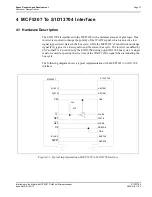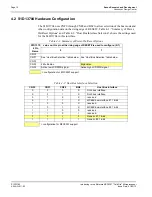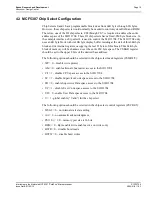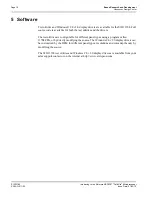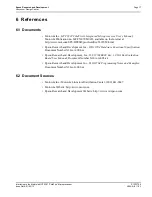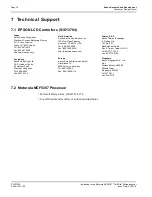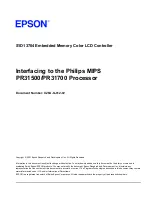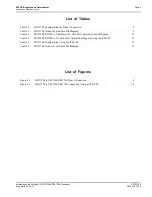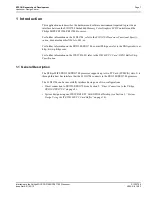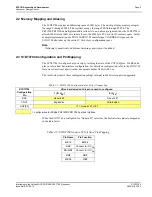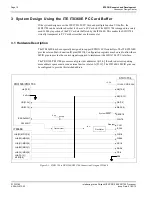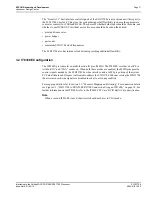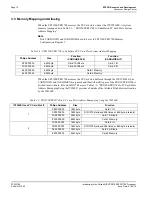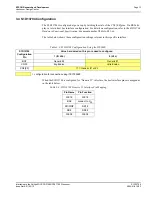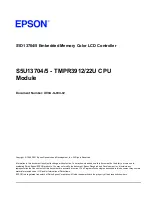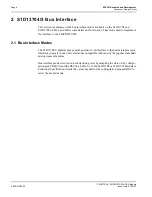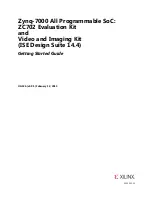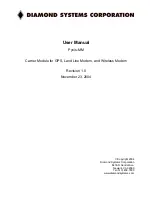
EPSON Research and Development
Page 9
Vancouver Design Center
Interfacing to the Philips MIPS PR31500/PR31700 Processor
S1D13704
Issue Date: 01/02/12
X26A-G-012-02
2.2 Memory Mapping and Aliasing
The S1D13704 requires an addressing space of 64K bytes. The on-chip display memory occupies
the range 0 through 9FFFh. The registers occupy the range FFE0h through FFFFh. The
PR31500/PR31700 demultiplexed address lines A16 and above are ignored, thus the S1D13704 is
aliased 1024 times at 64K byte intervals over the 64M byte PC Card slot #1 memory space. In this
example implementation, the PR31500/PR31700 control signal /CARDREG is ignored, the
S1D13704 also takes up the entire PC Card slot 1 configuration space.
Note
If aliasing is undesirable, additional decoding circuitry must be added.
2.3 S1D13704 Configuration and Pin Mapping
The S1D13704 is configured at power up by latching the state of the CNF[4:0] pins. Pin BS# also
plays a role in host bus interface configuration. For details on configuration, refer to the S1D13704
Hardware Functional Specification, document number X26A-A-001-xx.
The table below shows those configuration settings relevant to the direct connection approach.
When the S1D13704 is configured for “Generic #2” interface, the host interface pins are mapped as
in the table below.
Table 2-1: S1D13704 Configuration for Direct Connection
S1D13704
Configuration
Pin
Value hard wired on this pin is used to configure:
1 (IO V
DD
)
0 (V
SS
)
BS#
Generic #2
Generic #1
CNF3
Big Endian
Little Endian
CNF[2:0]
111: Generic #1 or #2
= configuration for Philips PR31500/PR31700 host bus interface
Table 2-2: S1D13704 Generic #2 Interface Pin Mapping
Pin Name
Pin Function
WE1#
BHE#
BS#
Connect to IO V
DD
RD/WR#
Connect to IO V
DD
RD#
RD#
WE0#
WE#
*

